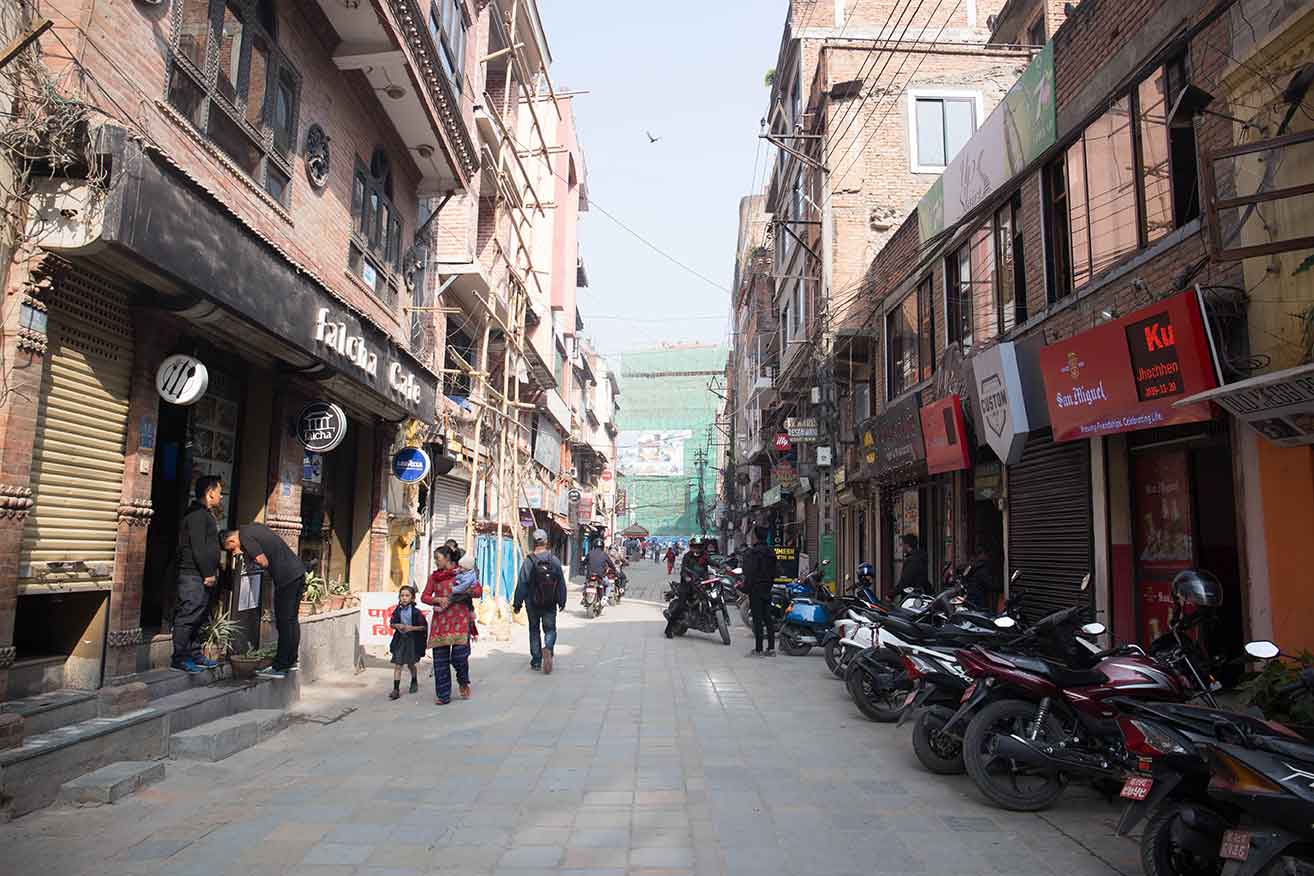Hope is a belief, and finds expression in the power of trusting. A walk through the valley can evoke some strangely familiar sights of such faith.
Belief systems are perhaps the first medicines known to man, and whether they cause a difference or not is subjective. Compared with modern day medication, they seem strange and mythic. Rickshaw drivers wait by the Ikha Narayan (10), a small two-roofed temple. Its shrine houses a beautiful 10th-11th century four-armed Sridhara Vishnu, flanked by Lakshmi and Garuda. On the same road, continue through a busy Newar neighborhood to the next intersection, where the Kal Tol temple sits with its stacks of pottery. Toothache sufferers seeking a cure have driven hundreds of nails into a slab of wood here. Opposite, under a roof, a piece of wood is punctured with thousands of nails around a tiny gilded image of Vaisha Dev, the god of toothache. To plant a nail here is to get rid of pain by pinning down all evil spirits and influences. If this folk remedy doesn’t work, the nearby lane is filled with dentists’ parlors left and right. Their window displays of advertisements of dentures provide the medical approach. Some of them face the road, so all who wish can watch a tooth being extracted.
 This neighborhood is called Bangemudha - where bange means crooked and mudha means a log of wood or a wooden stool - after an important and legendary piece of wood of which the toothache deity’s abode is only a fragment. It’s a busy corner, as yet untouched by much sign of modernity. Porters frequent the small tea stalls here, some no more than a kerosene stove and a few glasses. Also called Killagarh, the numbers of nails that are hammered represent the number of suffering teeth. Legend has it that Wasya Dya first came to Kathmandu to watch the dances of naradevi and stayed so long that he took root as a great tree. Today all that is left of the ancient tree is this gnarled section of wood, considered endangered.
This neighborhood is called Bangemudha - where bange means crooked and mudha means a log of wood or a wooden stool - after an important and legendary piece of wood of which the toothache deity’s abode is only a fragment. It’s a busy corner, as yet untouched by much sign of modernity. Porters frequent the small tea stalls here, some no more than a kerosene stove and a few glasses. Also called Killagarh, the numbers of nails that are hammered represent the number of suffering teeth. Legend has it that Wasya Dya first came to Kathmandu to watch the dances of naradevi and stayed so long that he took root as a great tree. Today all that is left of the ancient tree is this gnarled section of wood, considered endangered.
 There is another Wasya Dya in South Kathmandu, an indication, perhaps, of the rivalry, between the north and south. Shrines of faith that may seem strange to the modern eye, and yet familiar to the believer, stand out as landmarks of identity for many communities. A walk through these sites of religious importance is not just a tour of the curious and the notable, though there is plenty of that. The walks are strolls through a past that is alive in the present, a reminder of the cultural history of the valley and of the different but intertwined religious practices. Start somewhere that has faded into the background of your everyday routine. You will be surprised with what you did not know, or have forgotten about the space around you..
There is another Wasya Dya in South Kathmandu, an indication, perhaps, of the rivalry, between the north and south. Shrines of faith that may seem strange to the modern eye, and yet familiar to the believer, stand out as landmarks of identity for many communities. A walk through these sites of religious importance is not just a tour of the curious and the notable, though there is plenty of that. The walks are strolls through a past that is alive in the present, a reminder of the cultural history of the valley and of the different but intertwined religious practices. Start somewhere that has faded into the background of your everyday routine. You will be surprised with what you did not know, or have forgotten about the space around you..











